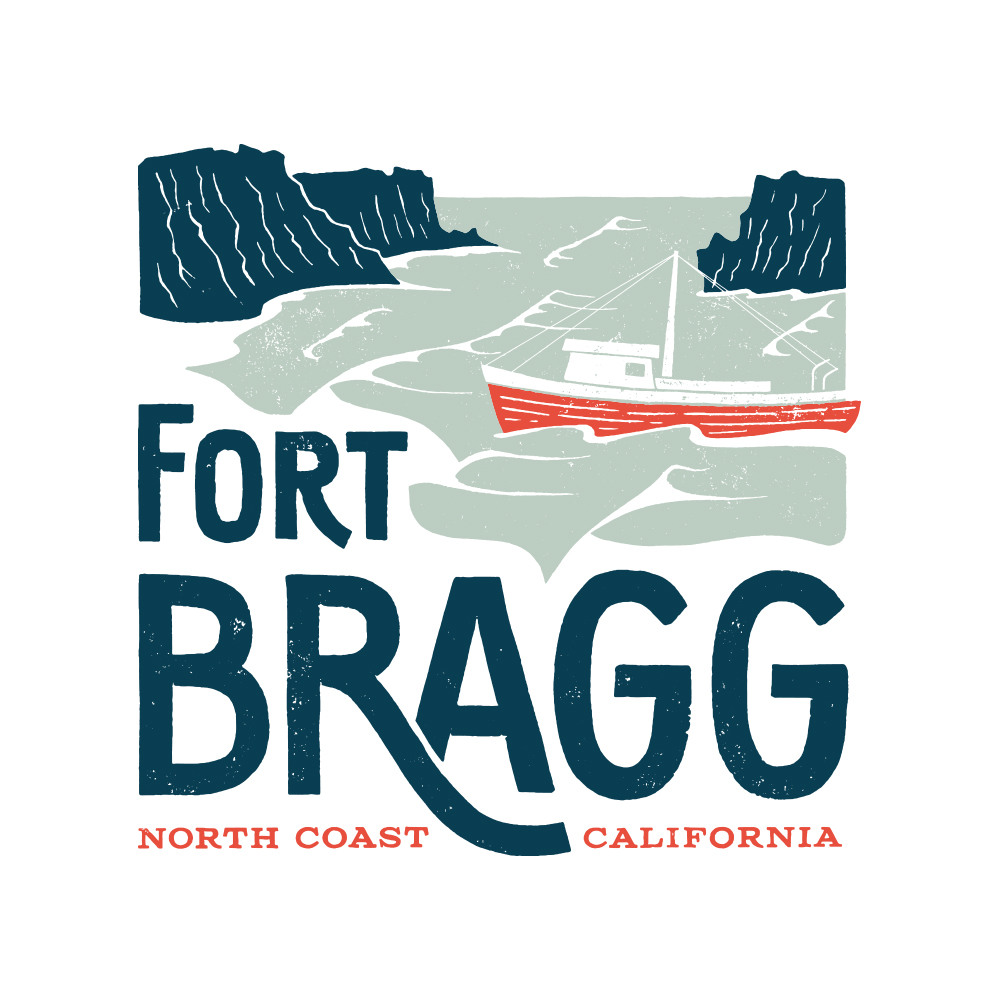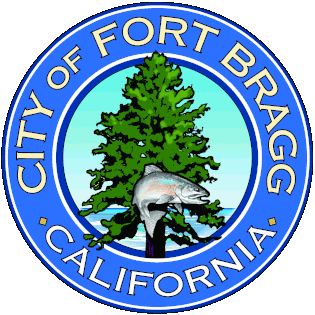Noyo Ocean Collective
The Mendocino Coast is a rural region overlooking the Pacific Ocean, characterized by rugged mountains, traversed with rivers, home to magnificent redwood and kelp forests, and the cultural and ancestral homelands of Indigenous communities. Beginning in the mid-19th century, the regional economy centered on resource extractive industries such as logging and fishing, which have experienced declines in recent decades. Add climate-related natural disasters – such as drought, fire, kelp forest loss – demographic shifts and the COVID-19 pandemic, declines have exposed both a vulnerable environment and fragile economy. In an attempt to create climate and community resiliency along the Mendocino Coast, the Noyo Ocean Collective formed.
The Noyo Ocean Collective (NOC) is committed to implementing a shared resiliency vision in which economic vitality and environmental sustainability are compatible, outcomes are equitable, and community priorities are centered. Founding members of the NOC include the City of Fort Bragg, Noyo Harbor District, Noyo Center for Marine Science, Mendocino College, Sherwood Valley Band of Pomo Indians and West Business Development Center. This collective effort is strengthened with support from affiliates, such as California Sea Grant, Kai-Poma, Conservation Works, The Nature Conservancy, Sonoma Mendocino Economic Development District, and more. Several agencies and organizations have invested funding to support our success, including California Sea Grant, California Coastal Commission, Coastal Conservancy, California Employment Department, U.S. Department of Commerce, and others.
Founding Members
City of Fort Bragg
The City of Fort Bragg is home to nearly 7,000 residents and serves as the commercial center for surrounding communities along the Mendocino coast. It occupies 2.7 square miles, a third of which has served as a timber mill for generations. Georgia-Pacific closed the mill site in 2002, and cleanup efforts are currently taking place under the oversight of California’s Department of Toxic Substance Control. Lost good paying jobs have not been replaced, and the City relies heavily on Transient Occupancy Tax generated from tourism. In 2020, the US Department of Commerce invested in an economic diversification study for the city. This effort culminated in a 4-day city wide event – the May 2022 Blue Economy Symposium and Learning Festival, which started the process of establishing a blue economy vision and identifies paths forward to help us realize our goals. One of the many partnerships that has resulted is with the California Sea Grant Program who has created a new extension fellowship opportunity that will work from City Hall and help us develop The Plan.
Noyo Harbor District
Many agencies share responsibility for the Noyo Harbor: Noyo Harbor District, Mendocino County, California Coastal Commission, Dept. of Fish and Wildlife, Dept. of Boating & Waterways, and US Army Corps. of Engineers. Fishing is central to Noyo Harbor’s identity and closely tied to the culture and economic heritage of the region. Noyo Harbor consistently ranks in the top ten commercial ports in California in terms of ex-vessel value and commercial fish landings. The harbor also supports several charter, sport fishing and recreation boating vessels.
Sherwood Valley Band of Pomo Indians
The homelands of Sherwood Valley Band of Pomo Indians extend from approximately the Hwy 101 corridor in Willits, through the redwood forests, on to the coast. The Sherwood Valley Rancheria was established under Secretarial Order in 1909. It is the successor in interest to ownership of the Mendocino Indian Reservation, established by Act of Congress on March 3, 1853. Sherwood Valley Rancheria is governed under a Constitution and Bylaws duly adopted and approved by the Secretary of the Interior on July 25, 1974. Recently, Sherwood Valley Band of Pomo Indians, Coyote Valley Band of Pomo Indians and Round Valley Tribes formed a Tribally chartered 501c3 nonprofit organization, Kai Poma, to return 171-acres of state land managed by Caltrans to indigenous stewardship. The area surrounding what is now called Blues Beach holds significant cultural and natural resources. Kai Poma has a continued interest to protect and restore these resources for the benefit of all Mendocino tribes, while continuing to provide the public coastal access.
Mendocino Coast Center
The Coast Center is the newest location to Mendocino-Lake Community College District, which also includes the Ukiah Campus, Lake Center, and North County Center. The College is a federally recognized Hispanic Serving Institution and has the highest number and percentage of Native American students of all California Community Colleges. The Coast Center partners with Fort Bragg High School to provide a robust dual-enrollment program, as well as a Career and Technical Education (CTE) program. Currently, funds are being sought to update the Coast Center to support kelp restoration efforts, hire faculty to buildout bluestem curriculum, internship opportunities, cooperative work experiences, and to train local people to enter marine and climate-focused jobs at every level.
West Business Development Center
The West Center understands that small businesses are the heart of every community and provides numerous programs and resources to support local entrepreneurship. Learn more about how the women’s business center, SDBC, StartUp Mendocino, Centro Latino West, and Emergency Prep programs serve our local small businesses. West Center joined the NOC as Mendocino County’s economic development stategist and helped secure multiple grants to move blue economy initiative forward. Currently, West Center and the Noyo Marine Science Center are working together to develop a comprehensive business plan, and West Center is also working with the Noyo Harbormaster to offer entrepreneurial training programs to our local fleet.
Noyo Center for Marine Science
The Noyo Center is a 501(c)(3) non-profit organization committed to advancing ocean conservation through education, exploration and experience. Early in the visioning process for reuse of the 420-acre mill site that dominated Fort Bragg’s coastline for generations, the community identified the need for public access and a marine science facility to anchor future development. Today folks can visit the Noyo Center at three locations: the Discovery Center Science Museum in downtown Fort Bragg, the Crow’s Nest Interpretive Center on the Noyo headlands, and their marine field station situated on the water in Noyo Harbor. Plans are being develop for the future Ocean Science Center (OSC) on their 11.6-acre bluff-top property. Currently the Noyo Center is working with architects to develop schematic designs for the OSC and with the West Business Development Center to create a comprehensive operational business plan and blue economy strategy.
Affiliates
California Sea Grant
The National Sea Grant College Program was established by the U.S. Congress in 1966 and works to create and maintain healthy coastal environment and economy. In 1973, the California Sea Grant Program (CASG) began – a collaboration of the National Oceanic Atmospheric Administration (NOAA), the State of California, and universities across the state to create knowledge, products and services that benefit the economy, the environment and the citizens of California. Currently, CASG is partnering with the City of Fort Bragg to host a 24-month Coastal Mendocino Extension Fellowship. The fellow will help develop The Plan by coordinating and conducting community engagement, collecting data, and soliciting input on science results and planning concepts.
Fort Bragg Unified School District
FBUSD consists of five school campuses serving the Fort Bragg community and surrounding areas. FBUSD actively partners with Mendocino College and plans to expand the partnership to provide education and experience in industries that sustain the coastal way of life. Our students already have access to a CTE program that offers several pathways that includes agriculture, culinary arts, digital media arts, and agriculture mechanics. Currently, funds are sought to expand our CTE program and partnerships to include pathways directly related to the Blue Economy upon which our community depends. This expansion will include funding for faculty and supplies.
Sonoma Mendocino Economic Development District
SMEDD unites economic development strategies for the counties of Mendocino and Sonoma. A significant responsibility of the district is overseeing completion, monitoring implementation progress, and supporting on-going planning refinement of the Compressive Economic Development Strategy (CEDS). The current CEDS includes strategies to grow the blue economy sector, and highlights Mendocino Coast Blue Economy, Noyo Center for Marine Science Center, Fort Bragg’s Seawater Intake Project, and the Noyo Harbor Community Sustainability Plan projects.







